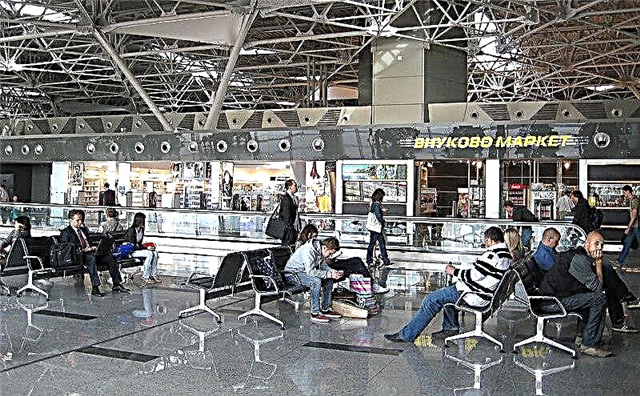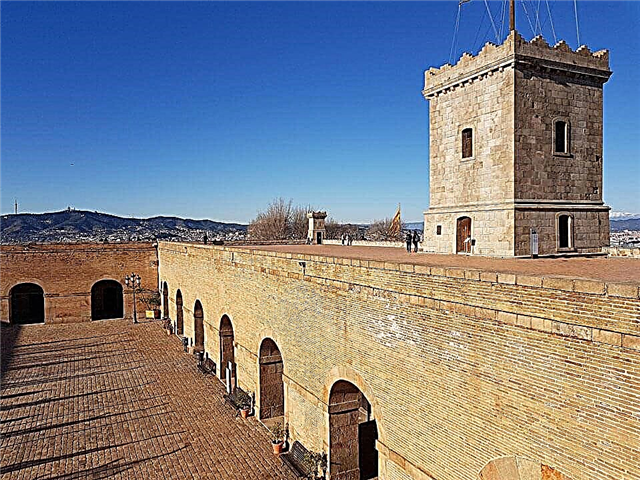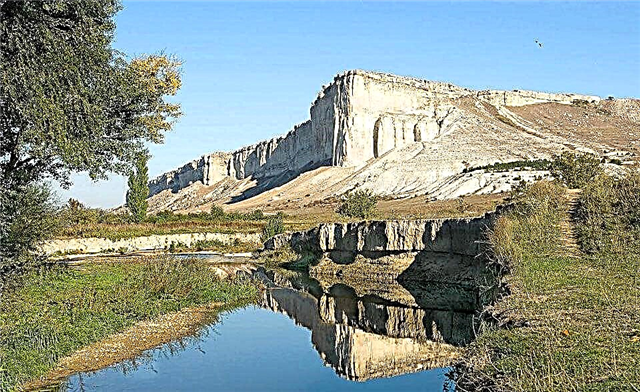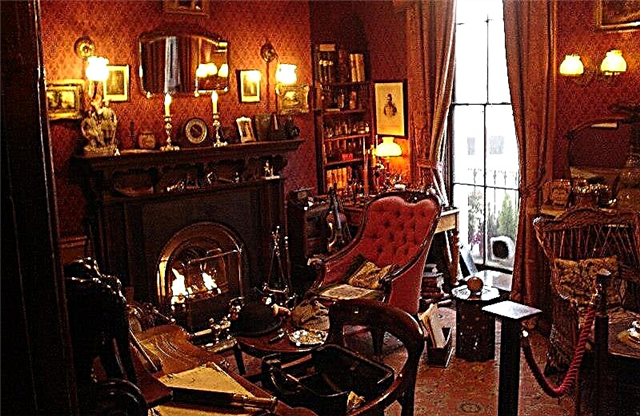Address: Russia, Moscow, 2nd Krasnoselsky lane
Foundation date: 1837 year
Main attractions: Church of All Saints, Church of Alexy, the Man of God
Shrines (not a complete list): the miraculous image of the Most Holy Theotokos, the icon of St. Paul the Apostle, the image of St. Alexis, the man of God
Coordinates: 55 ° 47'03.0 "N 37 ° 40'02.3" E
Content:
Although one of the women's convents in Moscow began to revive just a few years ago, its history begins in the middle of the 14th century. The ancient monastery has existed in Krasnoe Selo for over 180 years. The restoration work here has not been fully completed, but the monastery churches are open to pilgrims and tourists every day.

Entrance gate of the Novo-Alekseevsky monastery
The history of the monastery from the moment of foundation to the 19th century
The first convent dedicated to Alexy, the man of God, appeared on the site where the famous Cathedral of Christ the Savior now stands. In the Middle Ages, this corner of the city was called Ostozhye, because in the floodplain of the river. There was a lot of mowing in Moscow, and haystacks were laid along the river bank. The new monastery was founded in 1358 under the Metropolitan of Kiev and All Russia Alexy, and his own sisters became the first nuns in it.
At first, a wooden Alekseevskaya church was built in the monastery, and then a wooden cathedral, consecrated in honor of the Conception of Righteous Anna, arose next to it. After that, the monastery was called Alekseevsky or Zachatievsky. When other monasteries in Moscow began to emerge, they began to add "old-timers" to the name of the ancient monastery.
After the expulsion of Napoleon's troops, the Russian Emperor Alexander I made a vow to build a large Orthodox church, which would mark the victory of Russian arms. In the 1830s, the construction of the grandiose Cathedral of Christ the Savior began in Moscow. To make room, the Alekseevsky monastery was moved to Krasnoe Selo.

The territory of the monastery from the gate
There is evidence that a settlement on the north-eastern outskirts of the city existed in the 12th century. It stood on the banks of a large pond, which was equal in area to the Moscow Kremlin. The name "Krasnoe Selo" has long been assigned to the picturesque area. In the XVI-XVII centuries, the territory of the Krasnoselskaya palace settlement, where artisans and merchants lived, stretched here.
In 1837, having received the blessing of Metropolitan Philaret, the nuns of the Old Alekseevsky Monastery moved to the Novoalekseevskaya monastery. The move was very solemn, and it was accompanied by crowds of people. The monastic shrines were carried through the entire city in a procession of the cross and placed in the Exaltation of the Cross Church.
The beautiful church that adorned Krasnoe Selo since the beginning of the 17th century became the first temple of the new monastery. After moving in just six months, eight two-story buildings, two towers, a stone fence and the Holy Gates were built in the monastery.

All Saints Church
Krasnoe Selo was very different from crowded Moscow. Far from the noisy center, it was quiet, and the sisters did not immediately get used to the new place. In 1840, a cemetery appeared near the monastery, where they began to bury not only the deceased nuns, but also residents of the surrounding villages. Over time, a large, well-maintained cemetery became one of the best necropolises in the city.
The architectural ensemble of the monastery was formed throughout the 19th century. In the 1850s, the Alekseevskaya Church was built in the monastery, the project for which was prepared by the talented Russian architect Mikhail Dorimedontovich Bykovsky. Then it was the turn of the Exaltation of the Cross Church. In 1857, the old church was completely reconstructed and significantly expanded. In the 1860-1870s, an almshouse, a refectory building, cell buildings and a hospital church of the Archangel Michael appeared in the monastery.

Chapel of the Icon of the Mother of God "Unfading Color"
In addition to reading prayers and church services, the sisters worked in vegetable gardens, in a gold embroidery, bookbinding, painting and chasing workshop. In addition, there was a school at the monastery, where girls who came from the South Slavic countries - Bulgaria and Serbia - studied. They received shelter and education, and then left to teach in their homeland.
The fate of the Novo-Alekseevskaya monastery in the XX century
By the beginning of the last century, there were 4 churches, 42 buildings, a women's school, an almshouse and a hospital in the monastery. The Alekseevsk monastery was inhabited by over 70 women of different ages.
The 1917 revolution radically changed the fate of the monastery. In 1922, church valuables were removed from the monastery churches, and two years later most of the nuns were evicted. Some of them remained to live in Moscow apartments, while others moved to the countryside.

Refectory
Then the city authorities closed all the monastery churches and began to liquidate the old cemetery, the territory of which was planned to be converted into a park. Local residents bitterly recalled that relatives were forbidden to carry the ashes of the dead, and marble monuments and tombstones were sold as building material.
In the early 1930s, an active anti-religious campaign was launched in the country. The remaining nuns were arrested, convicted and exiled to the territory of Kazakhstan and the northern regions of Russia. Then those sisters who lived outside the walls of the monastery were also repressed. Some of them were also sent away from Moscow, while others were shot.
During the years of Soviet power, the Institute of Fisheries, a pioneer house, an archive and even an enterprise where umbrellas were made were located inside the monastery buildings. In 1979, the hospital church of the Archangel Michael was demolished and a residential apartment building was built in its place. Then a car overpass of the Third Transport Ring was built along the former necropolis, which divided the monastery lands in two.

The former cell building, now a boarding school for the elderly and the Church of Tsarevich Alexei
The monastery in the former Krasnoye Selo began to revive in the early 1990s. It took a lot of time and money to put the buildings and grounds in order, resume church services and improve the life of the monastic community.
Architectural monuments and shrines
In the part of the monastery, which is located north-west of the Third Transport Ring, there is an old Church of All Saints, erected in 1887, thanks to the architect Alexander Alekseevich Nikiforov. The picturesque temple was built in the style of retrospectivism and incorporated the best traditions of Russian architecture of the 16th-17th centuries. The one-domed church is connected to the original three-domed bell tower. The red brick walls are decorated with small white stone inlays and multicolored mosaic icons.
Nearby is a rectangular building rebuilt from a former cell building. Since 1994, a boarding school for the elderly and the Church of Tsarevich Alexei have been located inside the five-story building. Elderly nuns and old lonely lay women live here.

Church of Alexy, the man of God
To the south of the red-brick almshouse, you can see a small, elegant chapel built in 1995-2000. It is dedicated to the revered icon of the Mother of God "Unfading Color" and is decorated with mosaics on all sides.
On the other side of the Third Ring Road, near the 2nd Krasnoselsky Lane, there is the main Alekseevsky Church. This is the oldest church of the monastery that has survived to this day. It was built in 1853-1858 according to the project prepared by M. D. Bykovsky. On the east side, the rectangular temple ends with three semicircular apses, and a wide drum of light is crowned with a large, richly decorated dome.
The monastery today
Since 2013, the Alekseevskaya monastery has been a functioning nunnery. In addition, the main monastery church serves as the Patriarchal courtyard. Services are held at the All Saints Church. Services begin at 7:00 and 18:00 on weekdays, and at 9:00 and 17:00 on Sundays.
There is a private school at the monastery. Here, children study ordinary general education subjects, attend lessons in the Church Slavonic language, the basics of the Orthodox faith and church singing, and also go on pilgrimage trips.

Gates of the Memorial Complex "Walk of Fame"
The monastery museum has been opened since 2012. It displays materials telling about the history of the monastery, old books, documents and personal belongings of former nuns. A separate section is devoted to the life of Abbess Antonia (Troilina), thanks to whom the monastery flourished and was upset in the 19th century.
How to get there
The territory of the monastery is located in the 2nd Krasnoselsky lane, 7. It is not difficult to reach the monastery on foot from the Krasnoselskaya metro station. The entrance to the monastery is located from Gavrikov Street - from the side of the Third Ring Road.











